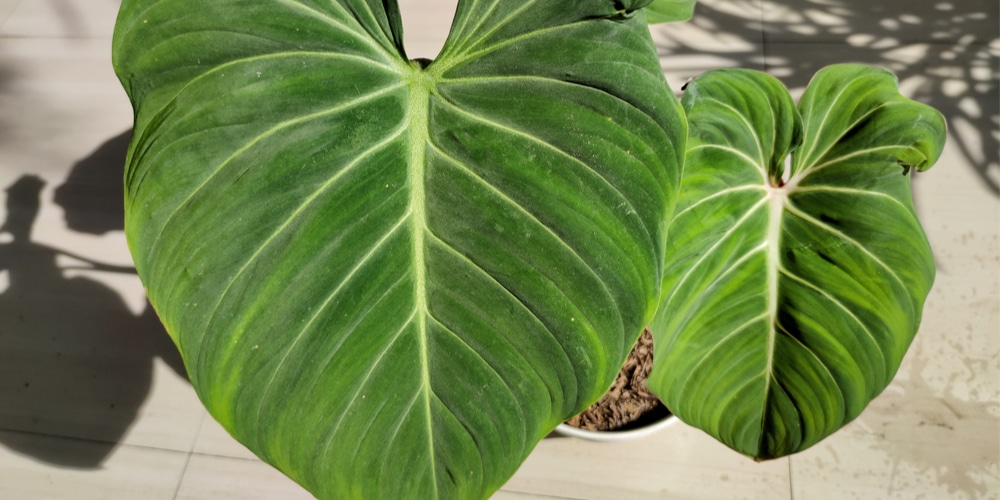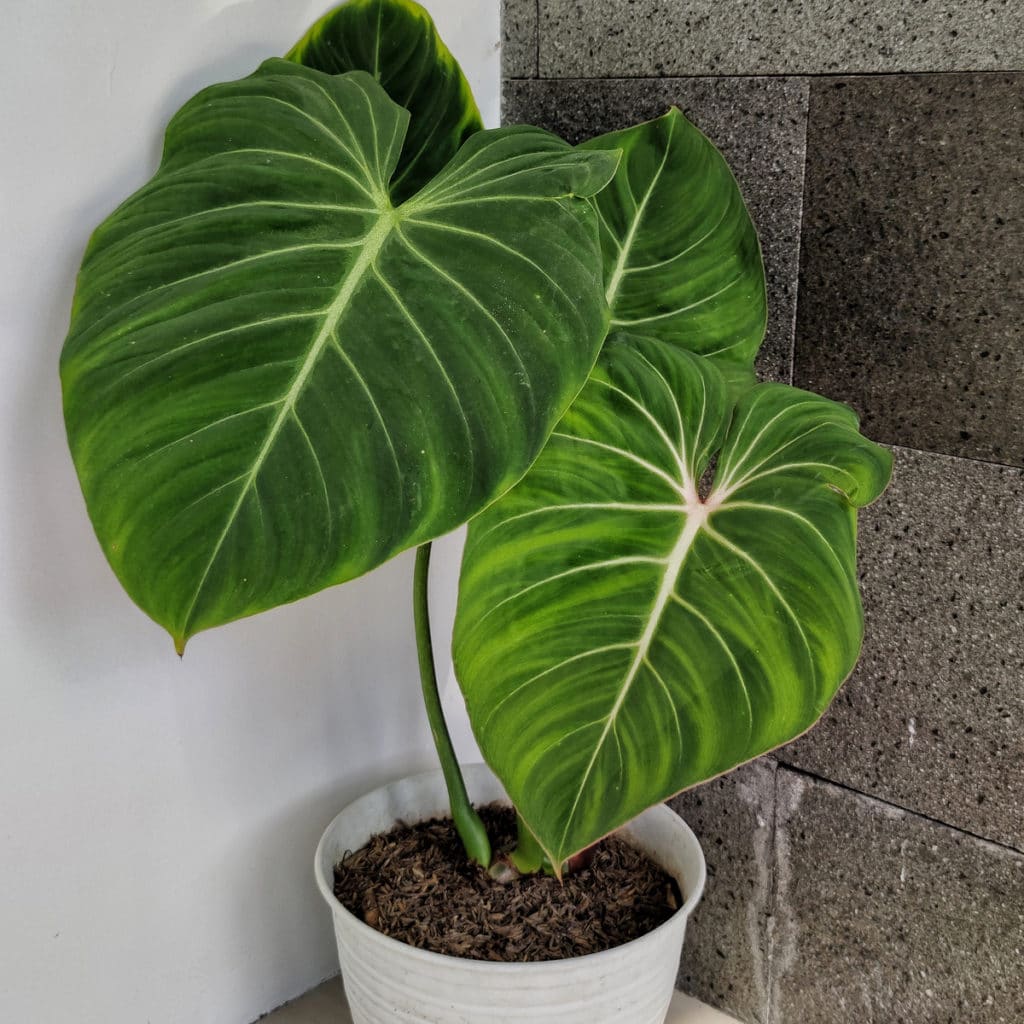The Anthurium Gloriosum is a broadleaf tropical plant that is native to Columbia. These plants are commonly kept as house plants but can also do well outdoors in the right climate. They can be grown in a greenhouse or in your yard if you live in USDA zones 9 to 11.
Anthurium Gloriosum plants are generally grown for their beautiful foliage. They have large heart-shaped leaves that are a tropical green and have prominent white veins. Let’s look at how to care for an Anthurium Gloriosum.
What is an Anthurium Gloriosum?
Anthurium Gloriosum plants are the second largest members of the Araceae family. They are flowering plants that grow in the South American rain forests. The plant’s flowers are either white, cream, or light yellow, and blooms grow in all seasons of the year.
The Anthurium Gloriosum is a perennial plant that grows horizontally along the ground. It’s a non-climber but does get relatively tall. These plants grow via rhizome, which sticks out of the soil slightly. The plants grow between two and four feet tall and spread to about 3.5 feet in width. Outside in its natural environment, Anthurium Gloriosums can grow up to six feet.
Anthurium Gloriosum’s have large emerald green leaves which have white veins that often have a pinkish tinge. Leaves grow between four and seven inches. In the wild, the leave can grow up to fifteen inches long. These plants have a relatively slow growth rate, and it takes years for them to reach maturity.
The downside to the Anthurium Gloriosum is that these plants contain toxic levels of calcium oxalate. When ingested, the plants cause irritation of the mouth and throat and vomiting. It’s best to keep young children and pets away from your plant.
How to Care for the Anthurium Gloriosum?
Anthurium Gloriosum are low-maintenance; here are some tips to help you grow and care for your plant:
Water
The Anthurium Gloriosum likes soil that’s moist but is able to drain. They don’t like to become waterlogged as this can cause root rot. The amount of water you need to provide will depend on the season and climate. During the summer months, you can water your plant two or three times weekly.
In the fall and winter, your plant will require less water, and you can reduce watering to once a week. In winter, your plant won’t need much water, so you can leave the soil to dry out completely before watering again.
Soil
Anthurium Gloriosum should be planted in the correct soil type if they are to thrive. They prefer rich nutritious soil that’s well-drained and aerated. The soil should have a pH range of between 6.1 and 7.5. You can use a potting mix that’s designed for tropical plants or mix Sphagnum moss or peat-perlite into a standard houseplant mix.
Sunlight and Temperature
Anthurium Gloriosums should be placed in bright indirect sunlight or in partial shade. You can grow these plants on your windowsill. Don’t leave outdoor plants in direct sunlight as their leaves may burn and turn brown. If your plants start to look leggy, this means that they aren’t getting enough light.
Anthurium Gloriosum should be kept in temperatures between 53 to 86°F. If these plants get too cold, they won’t grow well and may even die. The plants aren’t very hardy, and professional gardeners recommend wintering your plants in a greenhouse or bringing them into your home.
Humidity
As Anthurium Gloriosum are rain forest natives, they like to dwell in areas that have high humidity. However, the plant can survive if there’s less moisture in the atmosphere. If you live in an area with low humidity and feel like your plant is suffering, perhaps its leaves have started to turn yellow; you may need to adjust the humidity. You can mist your plant or use either a humidifier or put a tray of water and pebbles underneath the plant. Ensure the plant’s leaves don’t get too wet, or fungus could grow. Excess moisture can also cause the plant to rot.
Fertilizer
It’s also worth giving your Anthurium Gloriosum a balanced fertilizer suitable for tropical houseplants once a month in the growing season. Fertilizer can be mixed with water. Alternatively, you can use a slow-release fertilizer two or three times annually. Always follow the manufacturer’s instructions when using fertilizers.
Propagation
Anthurium Gloriosum can be propagated using stem cuttings during the spring or summer. Only propagate your plant when it’s mature, as cutting too much off a young plant is likely to kill it. Here’s how to grow a new Anthurium Gloriosum plant:
- Cut about six inches off your plant’s stem.
- Dip the cutting in growing medium or growth hormone.
- Plant the cutting in nutrient-rich soil that’s moist and contains sphagnum moss. Ensure you dip the first three inches of your cutting.
- Leave your new plant in a warm location and water regularly, so it doesn’t dry out. After three or four weeks, the steam will have developed roots.
- Care for your new plant as you would any other Anthurium Gloriosum. Please note that these plants grow very slowly, so you’ll need some patients. It can take a whole month or even six weeks for one leaf to grow.
Conclusion
Anthurium Gloriosum are lovely tropical plants that make a beautiful addition to any room. They are evergreen plants with large leaves that can be grown either indoors out outside. These plants are very popular due to their large heart-shaped leaves that are emerald green with light pinkish veins.
The plant grows via rhizomatous and can get very large. In their native South American rainforest (like Aralia Fabian, they grow up to six feet tall and also spread horizontally up to three feet. Plants kept indoors are generally smaller. It’s also worth noting that the Anthurium Gloriosum is a toxic plant that can affect humans and pets if consumed.

